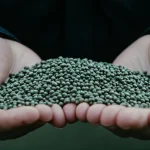Core Components of Perfectly Balanced Fish and Chips
Balancing the fish and chips essentials begins with selecting the best fish for fish and chips. Traditionally, white, flaky fish like cod, haddock, or pollock offer an ideal texture and mild flavor that hold up well to frying. These choices ensure the batter crisps beautifully without overwhelming the delicate fish beneath. Freshness is key—opt for fish that is fresh or properly thawed from frozen to maintain moisture and a clean taste.
Next come the perfect chip types, which hinge on potato variety. Floury or starchy potatoes such as Maris Piper or King Edward potatoes yield chips with a crisp exterior and fluffy, light interior. The size must be uniform to guarantee even cooking and a harmonious texture between chip and fish. Quality ingredients elevate the whole dish; only fresh potatoes and high-grade fish produce the classic balance that defines excellent fish and chips.
Additional reading : What are the best tips for making homemade crumpets?
When choosing ingredients for this meal, prioritize freshness and quality over convenience. Fresh fish and potatoes free from bruising or damage contribute significantly to the final taste and texture. The synergy between the perfect fish and chip types is what makes this dish truly satisfying—a crisp batter and crunchy chip paired with tender fish and fluffy potato cores.
Crafting the Optimal Batter and Seasoning
Creating the perfect fish batter recipe hinges on achieving the ideal texture: a crisp, golden crust that clings well to the fish without becoming soggy. Trusted batter recipes often begin with a blend of all-purpose flour and a leavening agent like baking powder, which helps produce lightness and crunch. Cold sparkling water or beer is frequently used to create a delicate batter consistency, as the carbonation contributes to an airy texture.
Topic to read : How do you achieve the ideal texture in a sticky toffee pudding?
When it comes to batter tips, temperature and mixing technique matter significantly. Keeping the batter cold prevents gluten from developing excessively, which maintains crispness. Mixing just enough to combine ingredients, leaving some lumps intact, reduces toughness after frying. Overmixing can lead to a dense batter, so gentle whisking is essential.
Seasoning plays a pivotal role in seasoning fish and chips without overpowering the inherent flavors of the fish. Salt and pepper remain the foundational seasonings, applied both to the fish before battering and to the batter itself. Subtle additions like a pinch of paprika, cayenne, or mustard powder can enhance warmth and complexity without dominating the palate. Citrus zest or herbs such as dill might be included sparingly to add fresh notes.
Balancing flavors ensures the batter complements the fish rather than masking it. The goal is to create a balanced flavor profile, where salt sharpens, pepper introduces mild heat, and nuanced spices gently elevate the dish. This balance invites the natural flavor of the fish to shine through, while the batter provides satisfying texture and seasoning harmony.
Mastering Frying Techniques for Texture and Taste
Choosing the right frying methods is crucial to achieving the perfect fish and chips texture. One key factor is the oil choice. Oils with a high smoke point, such as sunflower or peanut oil, are ideal because they maintain consistent heat without breaking down. Maintaining the right frying temperature—usually around 180°C (350°F)—ensures the batter becomes golden and crispy without absorbing too much oil, preventing greasiness.
Timing and sequencing are equally important. Start by frying the chips first since they require a longer cooking time at a slightly lower temperature to become fluffy inside and crisp outside. After removing the chips, increase the oil temperature briefly before frying the fish. This temperature shift helps the batter set quickly, locking in moisture. By following these frying tips—proper oil selection, temperature control, and sequencing—you can achieve simultaneous perfection, ensuring both fish and chips emerge with ideal texture and taste.
Accompaniments and Finishing Touches
When serving fish and chips, the right accompaniments and finishing touches truly elevate the dish. Classic sides like mushy peas, tartar sauce, and malt or malt vinegar are traditional choices that add distinct flavors, textures, and that nostalgic touch. Mushy peas contribute a creamy, earthy sweetness that tempers the fried crispiness, while tartar sauce offers a tangy creaminess that complements the fish’s golden batter.
Choosing the right fish and chips sauces is essential for balancing flavors. Tartar sauce’s acidity and richness contrast beautifully with the saltiness of the fish and chips, creating a harmonious taste experience. Malt vinegar, with its sharp acidity, cuts through the oiliness and refreshes the palate, making it a must-have for many. These sauces provide not just flavor but also a crucial acidity balance that keeps the dish bright and satisfying.
Perfect garnishes, such as lemon wedges, fresh parsley, or a sprinkle of sea salt, introduce freshness and subtle brightness. These finishing elements work alongside the sides and sauces to enhance saltiness and add vibrant notes that prevent the plate from feeling heavy. The interplay of acidity, saltiness, and freshness ensures each bite remains exciting and leaves the diner eager for the next. Balancing these elements is a key step in mastering the classic dish, transforming simple fried fish and chips into a memorable meal.




